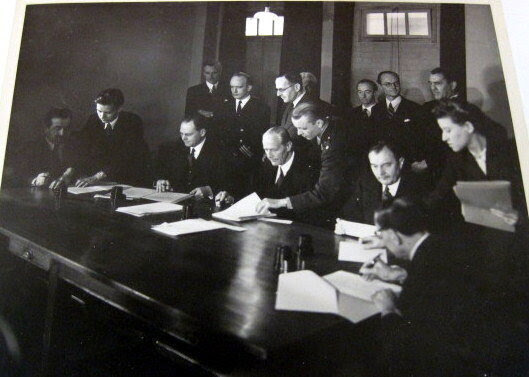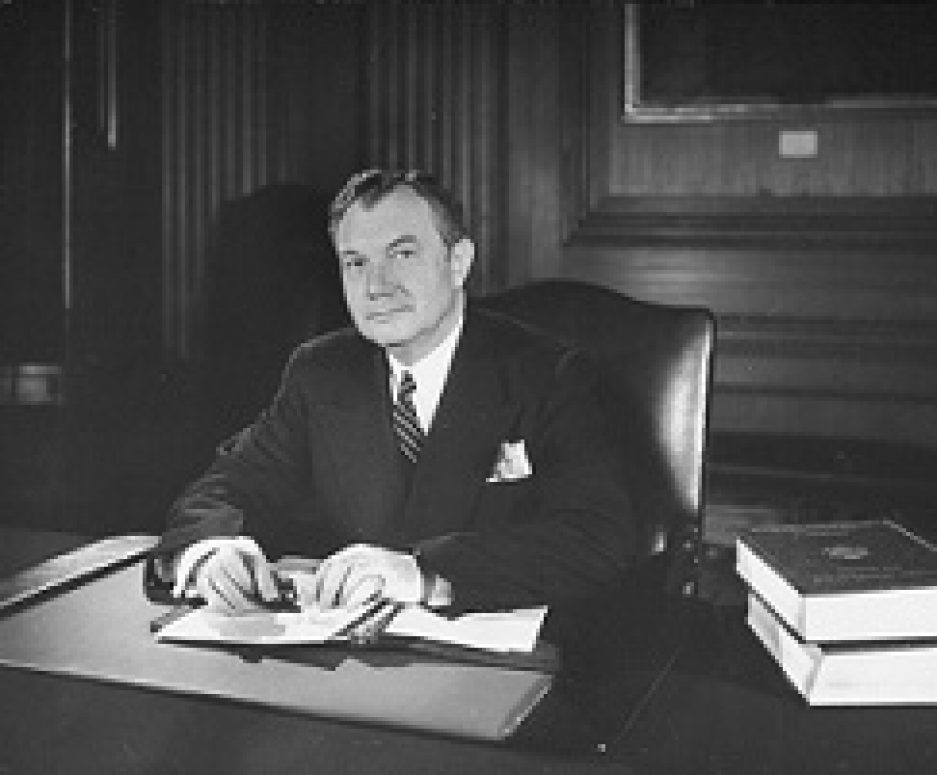Eighty years ago today, on August 8, 1945, United States Supreme Court Justice Robert H. Jackson and his Allied nation counterparts signed the London Agreement.
This event followed by three months Nazi Germany’s unconditional military surrender to the Allied powers in World War II. Since May 1945, and ongoing, the Allied armies had occupied the land mass that had been Germany. They had captured many of the former leaders of Nazi Germany. They had the power, unrestrained by any external force including global public sentiment, to do with them as they wished.
The London Agreement was and is a historic event in international diplomacy and peacemaking and a cardinal development in international law. The Allies announced their decision to take a path of law and public accountability, rather than acting summarily, with their unlimited military power and their high desire for vengeance, against their Nazi prisoners. Despite the absence of a peace treaty or any other legal or political constraint, the Allies chose to address the possible legal culpability of former Nazi leaders through a public, juridical process. To do so, the Allies created, in the Agreement, an international criminal court, the International Military Tribunal (“IMT”). In a Charter annexed to the Agreement, they prescribed the IMT’s constitution, jurisdiction, and functions.
The London Agreement fulfilled and advanced Allied leaders’ declarations during World War II that the major German Nazi leaders were international law violators, that they were arch-criminals whose offenses transcended particular locations and affected more than particular victims, and that these criminals thus should be, after their military defeat and captures, punished by an international process.
The governments of the United States, the United Kingdom, the Union of Soviet Socialist Republics, and the Republic of France reached the London Agreement after weeks of negotiation, primarily in London.
The Agreement, a brief document, created the IMT and its Charter, prescribed the procedure for other nations to subscribe to this undertaking, defined the Tribunal’s period of operation, and defined continuing national jurisdictions over other war criminals.
The IMT Charter, part of the London Agreement, is a more extensive document. It constituted the Tribunal, defining the number of judges, its quorum, and its majority vote requirements for convictions and punishments.
The Charter also, in provisions that were products of very complex and sometimes precarious negotiation, defined the IMT’s jurisdiction. It included crimes against peace, war crimes, and crimes against humanity, plus shared criminal liability for those who had engaged together in planning each of those substantive crimes. The IMT’s jurisdiction included leaders—official position was no basis for legal immunity. Its jurisdiction also included subordinates: “act[ing] pursuant to order of his Government or of a superior” was no basis for any person’s legal immunity.
The Charter also defined “fair trial” procedures, including defendants’ rights to particularized indictments, to testify, to have the assistance of counsel, to present evidence, and to cross-examine prosecution witnesses.
The Allies—Justice Jackson representing the U.S., and his international counterparts—negotiated, beginning in late June 1945, primarily at Church House, adjacent to Westminster Abbey.
They reached final agreement during the negotiating session on Thursday, August 2, 1945.
During ensuing days, staff prepared official English, French, and Russian language versions of the Agreement for signature.
At Church House at 11:00 a.m. on August 8, Justice Jackson for the U.S., Lord Chancellor William Jowitt for the United Kingdom, both General Iona T. Nikitchenko and Professor Aron N. Trainin for the U.S.S.R., and Judge Robert Falco for the Provisional Government of the French Republic signed the London Agreement.

The London Agreement created the first international criminal court.
It charted (indeed, Chartered) the path to the international trial that began in Nuremberg, in the U.S. sector of the Allied-occupied former Germany, in November 1945.
It defined crimes that are foundations of modern international criminal law.
* * *
Some links—
- For the London Agreement, click here.
- For the Charter of the International Military Tribunal, click here.
- For a transcript of the August 2, 1945, London Conference final negotiating session, click here.
- For the entire London Conference proceedings, as published by the U.S. Department of State in 1949, click here.
- For YouTube video of an August 8, 2020, Robert H. Jackson Center webinar commemorating the 75th anniversary of the signing of the London Agreement, click here. My lecture on Justice Jackson and the London Conference and Agreement runs from time counter reading 10:10—24:05.
